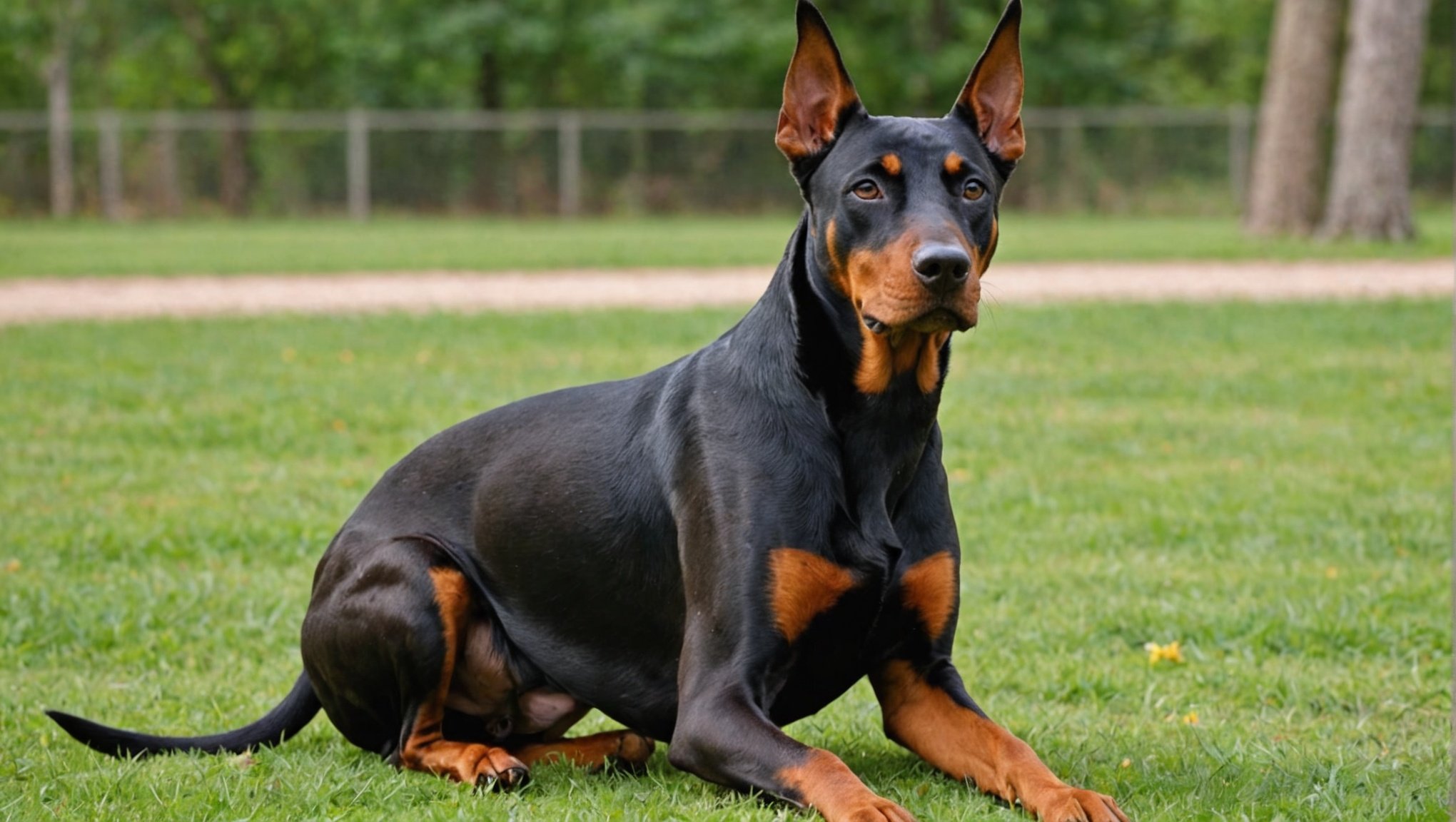For every pet parent, the health and wellbeing of their beloved companions is a top priority. As such, any hint of a disease or an infection can be a cause for serious concern. This is particularly true for diseases that, like Parvovirus (Parvo), are highly contagious and potentially deadly. Parvo is a highly infectious illness that mainly affects dogs, especially puppies.
Knowing the symptoms and treatment options of Parvo, particularly its manifestation in specific breeds like the Doberman Pinscher, is essential. In this article, we delve into the telltale signs of Parvo in Dobermans, the necessary steps for immediate action, and preventive measures to protect your pet from this insidious virus.
Avez-vous vu cela : What’s the best way to administer oral medication to a stubborn Shiba Inu?
Identifying Parvovirus
Before we delve into the specific symptoms of this disease, it’s important to understand what Parvovirus is. Canine Parvovirus (CPV) is an extremely virulent and contagious virus that affects dogs. It primarily targets the gastrointestinal tract, but it can also invade the white blood cells, causing severe infections and diseases.
Parvovirus is particularly dangerous to puppies who are between six weeks and six months old. However, adult dogs are not immune to the virus. It is more prevalent in some breeds, including Doberman Pinschers, which have shown increased susceptibility to this virus.
Avez-vous vu cela : Transform your dog's meals with fresh, healthy food choices
Recognizing the Symptoms of Parvovirus in Dobermans
The first step in protecting your Doberman from the ravages of Parvovirus is being able to recognize the symptoms. Early detection and prompt treatment significantly increase the chances of survival.
Parvo typically begins with lethargy and a loss of appetite. As the disease progresses, more severe symptoms may develop such as:
- Severe diarrhea, often bloody
- Vomiting
- Fever
- Dehydration
Your dog might also show signs of abdominal pain and tenderness. While the symptoms can vary slightly, these are the most common signs of Parvo in Dobermans.
Immediate Actions to Take if Symptoms are Detected
If your Doberman exhibits any of these symptoms, it’s imperative to act quickly. Contact your veterinarian immediately to schedule an appointment. Quick diagnosis and treatment can potentially save your dog’s life.
While waiting for the veterinary appointment, isolate your dog to prevent the disease from spreading to other pets. Maintain hydration and provide comfort for your pet. Please note that this is a serious disease that requires professional care and should not be treated at home.
Treatment Options for Parvovirus in Dobermans
The treatment for Parvovirus is primarily supportive care aimed at managing the symptoms and preventing secondary infections. This often includes intravenous hydration, antibiotics, anti-nausea medications, and potentially pain management.
There is no specific antiviral medication for CPV. The goal is to support the dog’s immune system until it can fight off the virus. Most treatments occur in a veterinary hospital, under the watchful eye of a professional team.
Unfortunately, despite aggressive treatment, not all dogs will survive a Parvo infection. This makes timely detection and intervention critical.
Preventing Parvovirus: The Importance of Vaccination
Prevention is always the best medicine. The most effective way to protect your Doberman from Parvo is through vaccination. Puppies should be vaccinated starting at six to eight weeks of age, with booster shots every three to four weeks until they are 16 weeks old.
Annual vaccinations are also recommended for adult dogs. However, your vet might suggest a different vaccination schedule depending on your dog’s health and lifestyle.
In conclusion, as pet parents, staying vigilant and proactive in the healthcare of our dogs is our responsibility. Recognizing the signs of Parvovirus and acting quickly can be the difference between life and death. Remember, in the face of any doubt or concern, always consult with your veterinarian. After all, they are the best equipped to guide and assist in ensuring the best health outcomes for our beloved pets.
Understanding the Risk Factors of Parvovirus in Dobermans
When it comes to Parvovirus, certain breeds like Dobermans are at a higher risk. Scientists are yet to conclusively explain why certain breeds are more susceptible, but research points towards a genetic predisposition. Thus, understanding these risk factors is key in ensuring your dog’s health.
The most at-risk group for Parvovirus are puppies between six weeks to six months old. Their immune systems are not fully developed, making them susceptible to the virus. Adult dogs are not immune either. Unvaccinated or improperly vaccinated dogs and those with weakened immune systems also face higher risks.
The environment plays a significant role too. Parvo is a highly contagious virus that can survive on surfaces for months, which means your Doberman could get infected by coming into contact with contaminated surfaces. Dog parks, kennels, pet stores, and even your own backyard can harbor the virus if an infected dog has been there.
Moreover, the virus is resistant to many household cleaners, making quick, effective disinfection a challenge. Therefore, practicing good hygiene, regular cleaning, and proper vaccination are crucial in reducing the risk of Parvovirus in dogs.
The Role of Pet Insurance in Parvo Treatment
Treatment for Parvovirus can be expensive, and costs can quickly add up with hospitalization, medications, and supportive care. This is where pet insurance comes in handy.
A comprehensive pet insurance policy can provide coverage for a significant portion of the treatment costs, including diagnostic tests, hospitalization, and medications. Some plans even cover preventative care like vaccinations, which can help protect your Doberman from diseases like Parvo.
When choosing a pet insurance plan, ensure it covers infectious diseases such as Parvovirus. Also, make sure to understand the terms, conditions, and any exclusions that apply. It’s advisable to get pet insurance before your dog gets sick, as most policies do not cover pre-existing conditions.
Conclusion
Parvovirus is a severe and highly contagious disease that unfortunately affects many dogs, with certain breeds like the Doberman Pinscher being more susceptible. However, knowledge is power. Understanding the risk factors, recognizing the clinical signs early, and taking immediate action can significantly improve the prognosis.
Pet insurance can be immensely beneficial, providing financial support for costly treatments and, in some cases, even preventative care.
Ultimately, the best defense against Parvovirus is prevention. Regular and timely vaccination is essential in keeping your pet safe. Besides, maintaining a clean environment and practicing good hygiene can also help to minimize the risk of infection.
Remember, when it comes to your Doberman’s health, always consult your veterinarian for advice. They possess the knowledge and experience to provide the best care for your beloved pet. In the end, their wellbeing depends on the care and the love we provide, and as responsible pet parents, it is our duty to protect them from threats like Parvovirus.
















